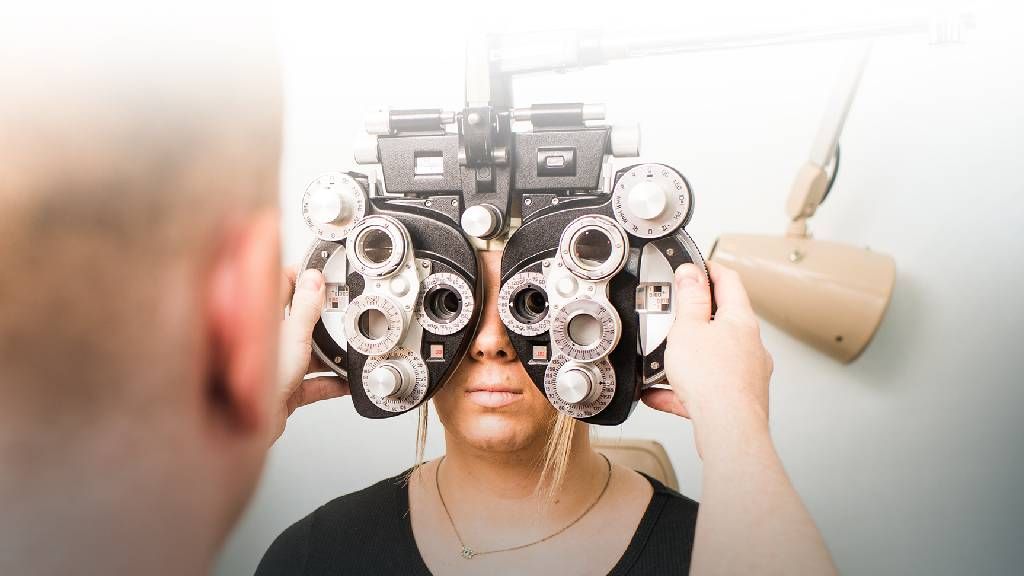Pediatric Eye Care at Andalusia Pediatrics: Taking Care Of Youthful Eyes
Pediatric Eye Care at Andalusia Pediatrics: Taking Care Of Youthful Eyes
Blog Article
Comprehending the Different Vision Modification Procedures Available for Clearer View
In the realm of vision correction procedures, a plethora of alternatives exist to attend to refractive errors and provide people with more clear sight. Allow's check out the intricacies of these treatments and dropped light on the path to accomplishing boosted vision clarity (Neurologist Andalusia).
LASIK Surgery
LASIK surgical procedure is an usual refractive procedure used to deal with vision problems such as farsightedness, nearsightedness, and astigmatism. This surgical method, which stands for Laser-Assisted in Situ Keratomileusis, intends to reshape the cornea to enhance just how light is focused on the retina, ultimately improving vision clarity. Throughout the procedure, a thin flap is developed on the cornea, and a laser is used to remove specific amounts of cells to improve it suitably. This reshaping permits light to be precisely focused onto the retina, correcting refractive errors.
One of the main advantages of LASIK surgical treatment is the quick improvement in vision experienced by patients. Many individuals discover a substantial enhancement in their vision right away after the treatment. Furthermore, most people report marginal discomfort and discomfort during the surgical procedure and healing period. The recuperation time for LASIK is relatively fast, with many individuals returning to their daily activities within a day or more post-operation. Overall, LASIK surgical procedure is a preferred choice for people looking for a long-term service for their vision issues.
PRK Procedure

PRK is a suitable choice for people with slim corneas or those at a higher risk of eye injuries, as it does not involve developing a corneal flap. The recuperation process for PRK is somewhat longer compared to LASIK, as the epithelium requires time to regenerate. Individuals may experience discomfort and blurry vision for a few days following the procedure.
Despite the longer healing time, PRK can produce excellent outcomes in vision enhancement, making it a valuable choice for those who may not be suitable prospects for LASIK surgery. - Andalusia Pediatrics
Implantable Lenses
As opposed to PRK where the cornea is reshaped straight, implantable lenses supply an additional approach for dealing with vision by placing artificial lenses inside the eye. This treatment is particularly beneficial for individuals with high levels of nearsightedness, astigmatism, or farsightedness who might not be ideal prospects for laser surgical procedures like LASIK or PRK.
Implantable lenses, likewise referred to as phakic intraocular lenses, job by supplementing the eye's all-natural lens with a man-made one. These lenses can be placed before the all-natural lens (former Eye Center Andalusia chamber) or behind the iris and before the all-natural lens (posterior chamber) By adjusting the power and positioning of these lenses, ophthalmologists can effectively remedy refractive mistakes and improve visual skill.
One benefit of implantable lenses is that they are removable and exchangeable, supplying flexibility for future adjustments. As with any type of medical treatment, there are risks entailed, such as infection or cataract development. People taking into consideration implantable lenses ought to speak with an eye care expert to determine the most ideal alternative based upon their specific needs and eye health and wellness.
Corneal Rings

The procedure for inserting corneal rings is reasonably quick and minimally intrusive, typically done as an outpatient procedure. During the surgical treatment, the ophthalmologist makes a little laceration in the cornea and inserts the rings at a certain deepness. When in position, the rings assist to reshape the cornea, giving a smoother surface for light to get in the eye, which can cause more clear vision.
Corneal rings are considered a relatively easy to fix treatment, as they can be eliminated or replaced if essential. While they might not completely eliminate the demand for glasses or get in touch with lenses, corneal rings can considerably enhance vision top quality and general aesthetic convenience for people with keratoconus or various other corneal irregularities.
Refractive Lens Exchange
Following the adjustment of corneal irregularities with treatments like corneal rings, another vision correction technique that can attend to refractive errors is Refractive Lens Exchange (RLE) RLE is a surgical treatment that entails replacing the eye's natural lens with a man-made intraocular lens (IOL) to correct refractive mistakes such as presbyopia, farsightedness, and nearsightedness. This treatment is especially advantageous for individuals who may not be ideal prospects for procedures like LASIK or PRK as a result of factors such as thin corneas or high refractive mistakes.
Healing time for RLE is reasonably quick, and clients can expect enhanced vision soon after the procedure. As with any kind of medical treatment, prospective threats and issues exist, so an extensive assessment with an eye treatment specialist is crucial to establish if RLE is the best vision improvement option.
Verdict

In the realm of vision modification treatments, a wide range of alternatives exist to attend to refractive mistakes and provide people with more clear sight.LASIK surgery is a common refractive procedure made use of to correct vision issues such as astigmatism, farsightedness, and nearsightedness.While additionally an usual refractive procedure, the PRK (Photorefractive Keratectomy) technique differs from LASIK surgical treatment in its strategy to fixing vision problems.Complying with the modification of corneal irregularities with procedures like corneal rings, one more vision improvement method that can address refractive mistakes is Refractive Lens Exchange (RLE) LASIK surgery, PRK procedure, implantable lenses, corneal rings, and refractive lens exchange are all alternatives that can attend to different vision concerns.
Report this page